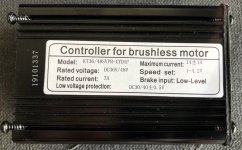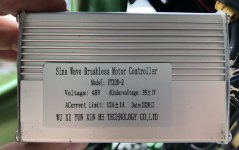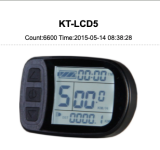ubik76
1 mW
- Joined
- Feb 17, 2021
- Messages
- 11
Hello everyone,
what could be the cause of this new Kunteng KT-14A controller not communicating with my motor?

I tried all sort of things, like changing the motor phase wiring with the scheme below (courtesy of Tommycat)

All I wanted was to replace the original controller (see below) with a programmable one just to increase the speed a bit.

The kunteng display turns on but it shows 0 battery charge (although fully charged), motor doesnt spin with PAS and throttle either.
I am running out of options..
Please let me know.
Thanks.
V.
what could be the cause of this new Kunteng KT-14A controller not communicating with my motor?

I tried all sort of things, like changing the motor phase wiring with the scheme below (courtesy of Tommycat)

All I wanted was to replace the original controller (see below) with a programmable one just to increase the speed a bit.

The kunteng display turns on but it shows 0 battery charge (although fully charged), motor doesnt spin with PAS and throttle either.
I am running out of options..
Please let me know.
Thanks.
V.





